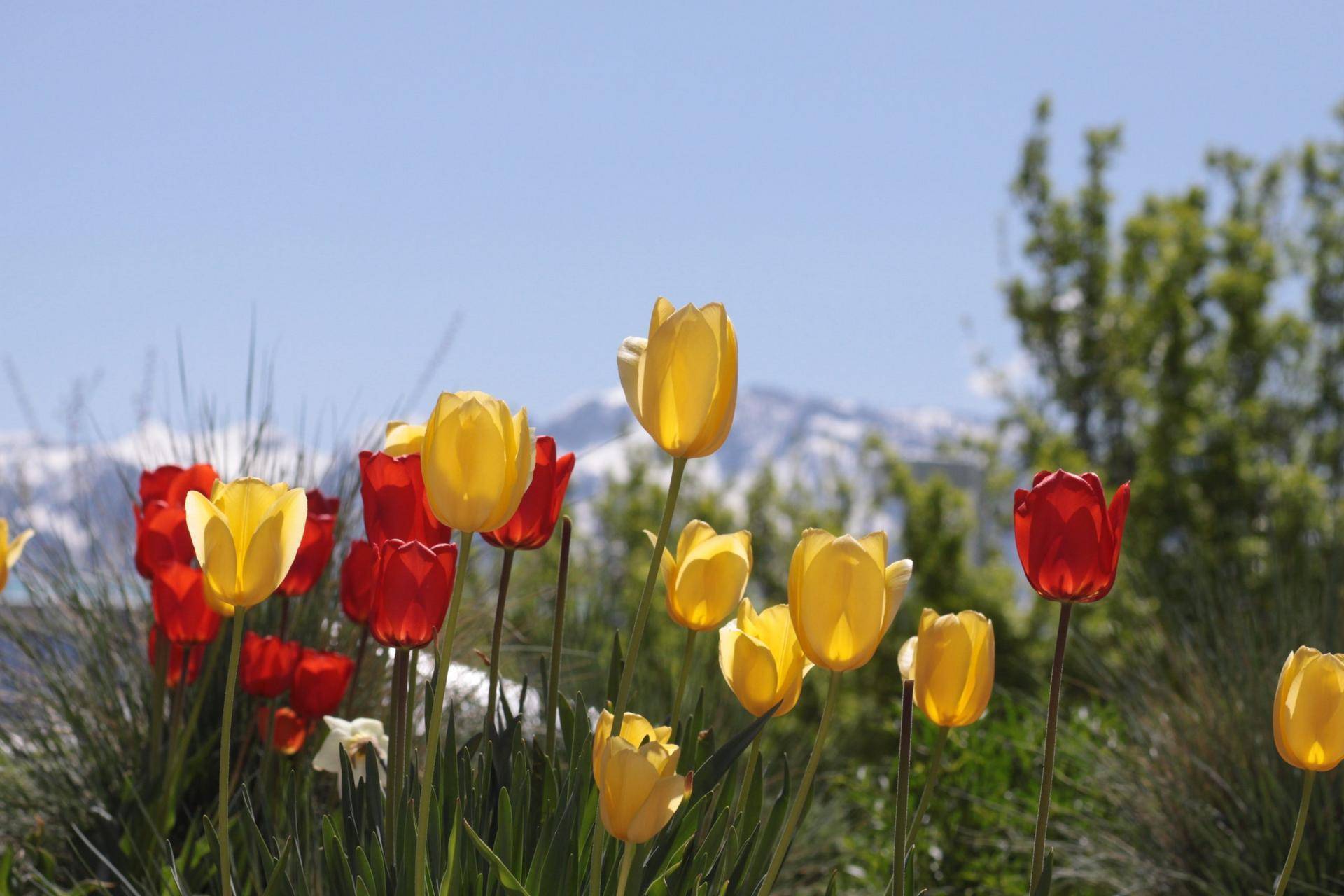By Taun Beddes
Spring-blooming bulbs are popular because of the beauty they add to the landscape and their ease of growing. Now is a good time to plant them, and many local retailers offer a wide variety. Consider these popular selections.
Tulips – Tulips are adapted to Utah soils and are available in many colors and flower classes. Many tulip hybrids only bloom well for three or four seasons, then need to be replaced. However, there are some classes that thrive longer. Darwin hybrid tulips, generally the longest blooming, are valued for their large, brightly colored blossoms in red, pink, orange, yellow and white, and grow to 30 inches tall. Fosteriana or Emperor tulips are known for their larger, elongated flowers in early spring. Flowers reach 10 to 20 inches and come in shades of yellow, white and red. Some varieties have variegated foliage. Species tulips are the original wild species and generally are the longest-lived tulips. The flowers are not quite as spectacular and the plants are often smaller, but they are great to use in naturalized areas and rock gardens.
Daffodils (Narcissus) – Daffodils are an excellent bulb choice because they are deer resistant. They are long lived and should be divided every three to four years. Yellow is the most common color, but cultivars are available in creamy white and yellow orange, and newer white varieties have pink fringes. Some cultivars grow from six to 12 inches.
Hyacinths – Hyacinths usually grow six to 10 inches tall. They are popular for their spring flower spikes with colors ranging from white to pink, red and purple. They work well as a border plant intermixed with other spring flowers. Hyacinths usually start to lose vigor after three to four years and should be replanted.
Crocuses – Crocuses offer an early spring surprise because they are among the first flowers to bloom. They often actually push up through the snow. Flowers only reach three to four inches tall and come in shades of pink, white, yellow and lavender-purple. They are best planted in large groupings instead of individually. They also work well in rock gardens and other naturalized areas.
Alliums – Alliums are slightly less common than other bulbs but perform well in Northern Utah. They are closely related to edible onions. Blossoms are unique and are sometimes referred to as the spiky ball flower or fireworks flower. Colors include white, red, pink and purple. Flower height ranges from six inches to almost three feet. The largest cultivars are showy and are often used individually as a springtime flowerbed focal point.
Irises – Irises are available in some form for most of the growing season. During the spring and summer, they can be purchased as potted plants. However, it is often less expensive to purchase the bulbs in the fall. The common bearded iris is seen in many local yards, but other types are available, including dwarf and variegated forms.
Fritillaries – Also called checkered lily, they are less common but add beauty to the landscape. Known for having an upside down flower, the color is usually white or light purple. Plant size ranges from six to 24 inches. The tallest cultivars are used as focal points just as larger alliums are. Smaller types will naturalize in drier areas.
There are many other spring-blooming bulbs that can be purchased from garden centers, farm stores and box stores. Bulbs are also available through online retailers.
Plant bulbs two to three times as deep as the bulbs are tall. Plant most large bulbs such as tulips or daffodils about eight inches deep and smaller bulbs three to four inches deep. Planting depth is measured from the bottom of the bulb. This rule for planting depth does not apply to summer bulbs, which have varied planting requirements, so consult the information supplied with the bulbs.
Tulips, daffodils and hyacinths should be planted with the nose of the bulb upward and the root plate downward. To plant, dig and loosen the entire bed to the proper depth. Press the bulbs into the soil, then cover with soil. Because the soil in a spaded bed is better drained and prepared, the planting will last longer. This method of planting is preferred over planting bulbs one by one with a bulb planter. In many soils, bulb planters do not work well, if at all.
Planting information is from Rob Cornwall, University of Illinois fact sheet, “Bulbs and More.”

